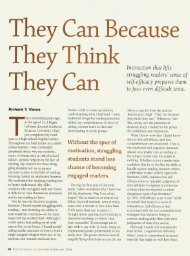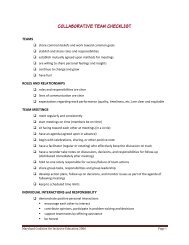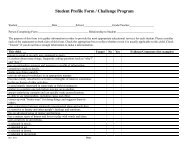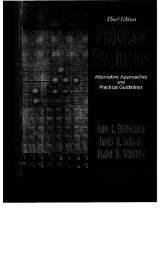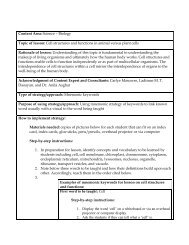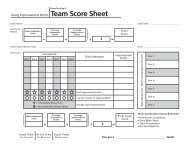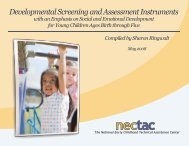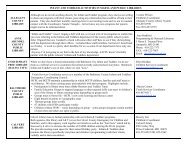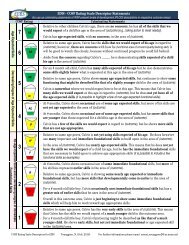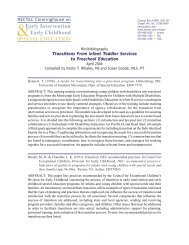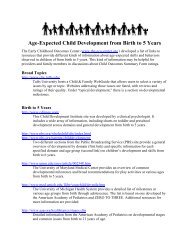The Autism Spectrum Disorder Service Guideline.pdf - CTE - Online ...
The Autism Spectrum Disorder Service Guideline.pdf - CTE - Online ...
The Autism Spectrum Disorder Service Guideline.pdf - CTE - Online ...
Create successful ePaper yourself
Turn your PDF publications into a flip-book with our unique Google optimized e-Paper software.
One of the developmental approaches commonly used is the relationship-based model,also called “Floor Time” and DIR, which was developed by Dr. Stanley Greenspan.Structured teaching (e.g. TEACCH) is a cognitively-based approach to teaching self careskills and managing disruptive behavior. (37)Another developmental model SCERTS (Social Communication, EmotionalRegulation, Transactional Support) This model, developed by Prizant, Wetherby, Rubin,and Laurent, is intended to provide a flexible, yet comprehensive multidisciplinary planfor children with ASD. Goals, specific objectives, progress ratings and evaluationprocedures are recommended with an emphasis on developing goals that address thecore deficit areas of children with ASD. <strong>The</strong> model addresses Social Communicationgoals and, Emotional Regulation. It uses Transactional Supports include the visual andorganizational supports children with ASD commonly need, support to families and staff,and the supports necessary to facilitate social interactions with partners. (38)Limitations to the socio-communicative approach include inconsistency in the number oflearning opportunities that occur depending on the skills of the interventionist and thedifficulty some children have in a distractible learning environment. Documentation ofprogress may also be less specific than in a behavioral approach.“<strong>The</strong> conceptual differences between developmental and behavioral approaches tointervention are real, yet the gaps in practice appear to be narrowing. Developmentalresearchers may criticize behavioral approaches for failure to target the specific deficitsassociated with autistic spectrum disorders, “ (39) and it has been argued that this failure toselect target skills within a meaningful developmental framework results in isolated skillsthat are difficult to transfer to other situations and skills. (40) Behaviorists counter that theirregularity of skill development in children with ASD decreases the relevance of carefuladherence to normal developmental sequencing. (41) However, “developmentalapproaches to ASD treatment have incorporated methods that recognize the needs ofchildren with ASD for high levels of structure, adult attention and consistency. At thesame time, behavioral interventions are increasingly being used to address complexsocial and communication goals in normal environmental settings.” (42)Relationship Based ApproachesIn recent years, experts have found promising results in using relationship basedapproaches for young children with ASD. One relationship based approach isResponsive Teaching. This parent mediated intervention model developed by Dr.Gerald Mahoney is especially well suited to the Birth to Three service delivery modelwhich emphasizes a strong partnership between families and service providers (43) . <strong>The</strong>rehas been a great deal of interest recently in Relationship Development Interventiondeveloped and promoted by Dr. Steven Gutstein. This approach focuses on teachingpeople with ASD how to develop strong emotional relationships with others (44) . To date,research validating this approach is incomplete.One of the drawbacks of the relationship-based approach for children with autism is theopen ended quality of the instructional environment. Children who lack core skills suchas joint attention and imitation or who have severe challenging behaviors may be harderto engage in this model.CT Birth to Three System • <strong>Service</strong> <strong>Guideline</strong> #1 • Revised July, 2002 and January, 200823



